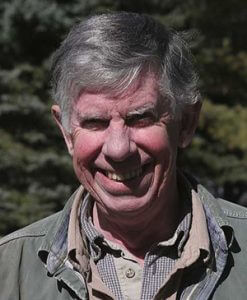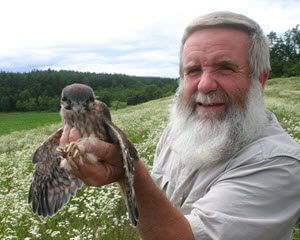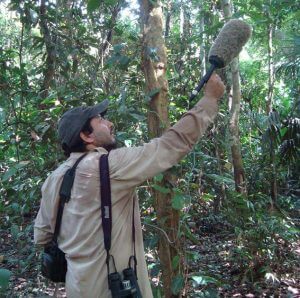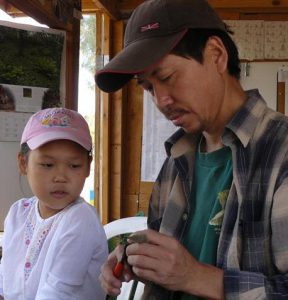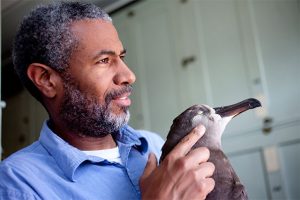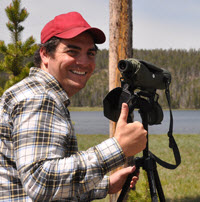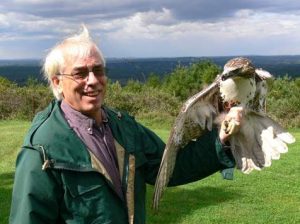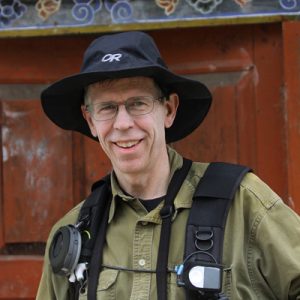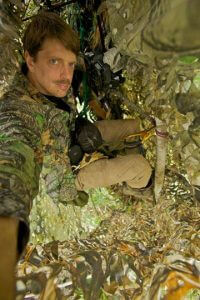Upcoming Programs
We are pleased to announce that Nuttall monthly meetings are back in person at Harvard.
Past Programs
(NOC members, login to view and listen to presentations)
Frank Gill – Bird Species Taxonomy: Then and Now
Major changes in world bird taxonomy are underway, driven by advances in speciation concepts and practices. World bird lists are challenged to keep up with the surge in the number of species recognized, together with their nomenclature and phylogeny. Birders are challenged to keep up with the lumps, splits, name changes, and sequences. This talk…
Read MoreDr. Aevar Petersen – Icelandic birds, mainly seabird population changes
The talk will focus on three main issues; (1) introduction to the Icelandic bird fauna; (2) seabirds and factors influencing population changes; and (3) seabird monitoring as a conservation tool. The breeding bird fauna of Iceland has rather few species, about 80, but this is made up in numbers. The principal bird groups are anseriform…
Read MoreDr. Leonardo Campagna – The genetic basis of plumage differences in the rapid capuchino seedeater radiation
As an evolutionary biologist I seek to understand how biological diversity is generated at the molecular level. I study a group of South American birds known as capuchino seedeaters, which may still be in the process of becoming species. Capuchinos are sexually dimorphic, and males from different species differ in secondary sexual characters such as…
Read MoreLorna J. Gibson – Built to Peck: How Woodpeckers Avoid Brain Injury
Woodpeckers peck on trees to feed on insects and sap, to build cavity nests and to drum during courtship. Measurements by a group of neurologists in the 1970s, using high speed video, indicate that woodpeckers can tolerate remarkably high decelerations on impact: up to 1500g, much higher than the level of 100g that causes brain…
Read MoreMichael D. Sorenson – Contrasting Patterns of Genetic Divergence in Obligate Brood Parasites: Implications for the Genetics of Host-Specific Adaptation
Avian brood parasites and their hosts have served as important models of coevolution and have produced a spectacular diversity of behavioral, morphological and physiological adaptations and counter-adaptations, our knowledge of which has expanded as additional species in Asia and the southern hemisphere have received intensive study. Until recently, essentially nothing was known about the genetic…
Read MoreTom Sayers – Rebuilding Local Populations of the American Kestrel – One Box at a Time
This presentation focuses on Tom’s energetic crusade to rebuild the American Kestrel population in northeast Connecticut, from 2009 when he began, up through the 2016 breeding season. Presented on January 9, 2017.
Read MoreChristopher Elphick – Canaries in the Salt Marsh: The Conservation of Saltmarsh Sparrows and other Tidal Marsh Birds
This talk describes the status of tidal marsh birds throughout the northeast, and focuses on the specific threats faced by Saltmarsh Sparrows. Presented on December 5, 2016.
Read MoreJosé Antonio Balderrama Torrico – Endemic and Endangered Birds of Bolivia
Endemic and Endangered Birds of Bolivia. Presented November 7, 2016.
Read MoreSundev Gombobaatar – Bird Research, Conservation and Birding in Mongolia
Dr. Gombobaatar’s presentation covers a brief introduction to Mongolia and bird distribution in different natural habitats, species status and richness, bird research and conservation works, including Regional bird red list and conservation action plans, migration pattern, population threats, birds in wind farms, raptor breeding ecology survey, birding activities, and future actions for Mongolian bird research and conservation. Presented on October 3, 2016.
Read MoreScott Edwards, PhD – Research and Teaching Ornithology at Harvard: Explorations in the New World
Research and Teaching Ornithology at Harvard: Explorations in the New World. Presented on June 6, 2016.
Read MoreVincent Spagnuolo – Restore the call: Recent advancements in Common Loon conservation through translocation and health research
Recent advancements in Common Loon conservation through translocation and health research. Presented on May 2, 2016.
Read MoreKen Meyer – Seasonal Movements of Rare Florida Raptors: Ecological Intrigue and Conservation Challenges
Seasonal movements and ecology of rare Florida raptors: needs and opportunities for protecting Crested Caracaras, Snail Kites, Short-tailed Hawks, and Swallow-tailed Kites. Presented on March 7, 2016.
Read MoreJohn Bates – The Wonders and Tribulations of Africa’s Albertine Rift: Biodiversity, Science and People in a War Zone
The Wonders and Tribulations of Africa’s Albertine Rift: Biodiversity, Science and People in a War Zone. Presented on February 1, 2016.
Read MoreTom French – 30 Years Following Peregrine Falcons to Recovery and Beyond
Tom discusses his work with Peregrine Falcons in the state, including the impact of raptor photography on knowledge of movements of banded birds. Tom chronicles the loss of nesting Peregrines in the state in 1955 through their current recovery to 32 nesting pairs. Presented on January 4, 2016.
Read MoreSteve Hilty – Colombia: Then and Now
The focus of this presentation is a look at Colombia and its remarkable biological diversity through the eyes of a young ornithologist, and his wife, as they struggled to carry out fieldwork in the early 1970s. This is followed by a look at Colombia’s unique ornithological history, and its fledgling ecotourism of the late 1970s…
Read MoreTom Stephenson – The Warbler Guide: A New Approach to ID
Identifying the warblers and other species singing in the field is one of the most enjoyable and satisfying aspects of birding. However learning and remembering the important ID points of difficult and similar vocalizations can be challenging. This lecture will cover many new techniques that make it easier to identify singing warblers and other species.…
Read MoreTim Laman – Ornithological Adventures in Australia’s Cape York Peninsula
In the last couple years, Tim has made several expeditions to the Cape York Peninsula, Australia, photographing, filming, and doing biodiversity survey expeditions, focusing a lot around birds. It is an area the size of Florida with less than 2000 people (compared to 20 million in FL). His longest expedition was a six-week trip by…
Read MoreMario Cohn-Haft – Birds of the Amazon Revisited: Haffer’s Legacy 40 years Later
Nuttall Ornithological Club’s publication number 14 elaborated, in 1974, the most complete and carefully thought-out explanation for the marvelous patterns of distribution of Amazonian birds that has been proposed to this day. Its author, Jurgen Haffer, made a brilliant contribution to the field of South American biogeography that continues to be a powerful influence. But…
Read MorePeter Pyle – Discovering and Conserving Bryan’s Shearwater
Bryan’s Shearwater (Puffinus bryani), was described as new to science by Pyle, A. J. Welch, and R. C. Fleischer in 2011, based on a specimen collected in February 1963 on Midway Atoll, Northwestern Hawaiian Islands. Peter will recount discovery of the new species and it’s etymology (named after his grandfather, long-time curator at the Bishop…
Read MoreAllison Shultz – History of the House Finch: Introductions, Novel Pathogens and Rapid Adaptation
Human-mediated introductions of species into new environments are common today with the ease of global travel, whether they be accidental or intentional. It is critical to understand the genetic effects these introductions have on the new populations as they adapt to their environment and face novel challenges, including diseases. The House Finch, a species native…
Read More


